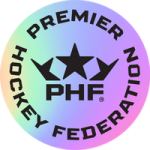On November 6, the first puck dropped on the seventh season of women’s pro hockey in the US, but this year, the competition looks very different, following a raft of changes that insiders and supporters hope will boost the popularity of the league across the US.
The push for a bigger audience comes at a time when sport across the US is adapting to the development of the sports betting sector. 
Thus far, there hasn’t been much interest in betting on the women’s pro hockey game among fans –although leading market specialists such as bookmakers.com do list a number of operators that allow for more specialized betting such as this.
There is hope that in time, a successful overhaul of women’s hockey could lead to more widespread options for bettors interested in the market.
Major franchise changes
The changes that have been introduced ahead of the seventh season represent the biggest reform of the league since it was first formed in 2015 as the National Women’s Hockey League, which remained the tournament’s title until last summer when it became the Premier Hockey Federation (PHF).
The catalyst for change was a change of governance, including a new commissioner, Tyler Tumminia, and the first item on the agenda was untangling the league from the duties associated with owning all six of the teams.
To that end, in October 2020, the remaining franchises under control of the league were taken over by W Hockey Partners, as a prelude to selling them to private ownership.
Moving to the same model that operates in other professional leagues was the goal, and that aim was largely successful. John Boynton of BTM partners bought the Metropolitan Riveters, based in New Jersey.
BTM also owns the Toronto Six, which joined the league following the collapse of the Canadian Women’s Hockey League, and the Boston Pride.
The Connecticut Whale was acquired by an ownership group led by clothing company Arc Hockey, while NLTT Ventures made a claim on two franchises – the Buffalo Beauts and the Minnesota Whitecaps.
Although the ownership of more than one franchise per owner is unusual, it’s largely being regarded as a temporary stage and bears a resemblance to what happened in the early days of MLS.
The ultimate goal for the league lays out plans that will eventually see six franchises run by six independent owners, an arrangement that should make the league more competitive and enable franchises to do more to promote and publicize their brand.
Resurgent league
These developments are in themselves remarkable, considering how close the league was to collapse just a few months ago.
There had been a long history of women’s pro hockey tournaments struggling for permanence, including leagues such as the WWHL, which had to cease operations in 2011, and it seemed as though the NWHL was going the same way.
Low pay and a lack of basic benefits such as health insurance led to dissatisfaction among players, and in the wake of the dissolution of the Canadian league, there was a strike in the 2019-20 season in which more than 200 top players took part.
The league agreed to a 50% revenue split with players on media and sponsorship deals, but that wasn’t enough to prevent some leaving the league.
A lack of audience and hence revenue has seen some private owners leave. The Beauts were once part of the Pegula Sports and Entertainment group, which includes the Buffalo Bills of the NFL and the NHL’s Buffalo Sabres, but they relinquished control of the club in 2019.
Both the Riveters and Whitecaps have also had affiliation agreements with local NHL franchises, but none have lasted.
Push for popularity
But this time there seems to be genuine optimism that women’s pro hockey can grow its popularity and achieve long-term financial stability. And the early signs are positive.
The credit card company Discover has joined Dunkin’ Donuts as the two biggest corporate sponsors in the history of the league, and the PHF have good reason to hope that more sponsors will join.
The catalyst for the hoped-for boost in sponsorship is a new broadcast deal with ESPN Disney, which also recently reacquired the rights to televise the NHL. Featuring on such a huge sports network could have a major impact on the PHF’s profile and hence its popularity and marketability.
This is not the first TV deal struck with women’s pro hockey, as Twitch and NBC Sports have been involved with the league in the past, but under ESPN, all 60 of the regular season games and the postseason play-offs will be featured on the same sports network for the first time.
This additional exposure also lay behind the rush to change the name of the league, to help present it as a new competition for the ESPN audience.
The league’s optimism has been further underlined by plans for growth. The PHF has already announced that the salary cap for every franchise will be doubled to $300,000 beginning this season and there are ongoing conversations about new expansion franchises.
The most notable of these is in Canada, where Montreal could enter a team in the league from the 2022-23 season.
Of course, there have been false dawns in the past and these are very early days for the PHF, but for the first time since 2015, there is genuine optimism that women’s pro hockey could establish itself as one of the most popular and significant pro leagues in US sport.



You must be logged in to post a comment.